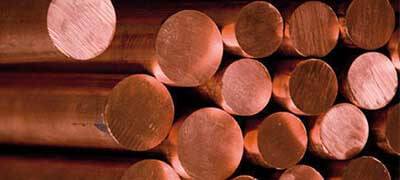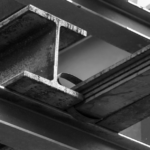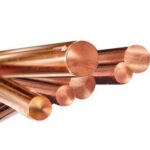The beryllium copper heating time includes both heating and heat preservation (soaking) periods. Short heating durations, fast heating rates, and even heating are required to reduce ingot oxidation and energy usage. To determine the beryllium copper heating time, add the heating temperature, the alloy type, and the size of the ingot.
The beryllium copper should be heated fast and for the appropriate length of time. Heat conduction occurs swiftly, the furnace temperature is high, and the temperature rises rapidly. High-temperature heating has several benefits, particularly for metals and alloys with high thermal conductivity. For other metals, however, the ingot will simply result in the overburning of coarse grains. The major goal of the soaking method is to avoid a large temperature differential between the ingot’s various components. In general, the temperature disparity cannot be larger than 15-20 degrees Celsius; so, the better the temperature homogeneity of the ingot, the better. When hot rolling, uneven heating causes cracks, waves, sickle curves, uneven thickness, and difficult bite. When the ingots are large, The heating time for beryllium copper should be increased, or the temperature of the heating furnace should be elevated.
The heating components made of beryllium copper are more complicated. As a result, throughout the real manufacturing process, we must continually remember the beryllium copper heating principle, use beryllium copper heating techniques precisely and flexibly, and constantly improve the beryllium copper processing quality and power
.The relative maximum strength value will be apparent on the ageing characteristic curve when the temperature exceeds 340 degrees Celsius. If the amount of cold working remains constant, the strength equivalent to the maximum strength will decrease as the aging temperature rises. If the ageing temperature is set and the rate of cold deformation is raised, the relative maximum strength value will rise significantly, but the presentation time will be reduced. This results in a reduced aging period to reach the desired strength value. Beryllium bronze’s aging hardening only produces a meta-stable sedimentary phase below 330 degrees Celsius; beyond 330 degrees Celsius, It can produce either an equilibrium sedimentary phase or a meta-stable phase, the latter of which is centered on grain boundaries.
To avoid under and over-aging, the temperature of beryllium copper throughout the ageing process must be carefully controlled. Under-aging can be compensated for by ageing to provide the required mechanical performance, but if over-aging occurs, it is difficult to reverse without periodic solution heat treatment. Of course, the essential functions can also be accomplished by optimizing the interaction of cold work, underaging, and averaging. For example, if the strength is less than the maximum value requested, cold work and under- or over-aging (dropping temperature, prolonging time, or raising temperature, shortening time) are employed to obtain the required mechanical performance of beryllium bronze.




